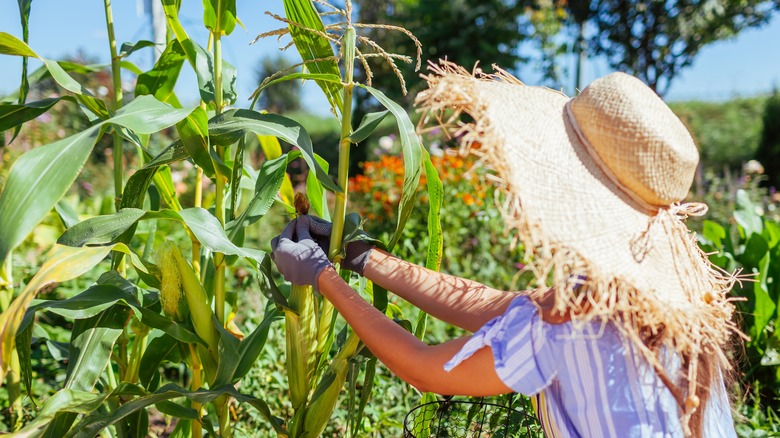Why You Might Consider Detasseling Corn In The Garden
Have you ever passed by a large corn farm and wonder why the farmers are removing the tassels? If so, you might ask yourself if you're supposed to be doing the same. The reason this is often done by commercial growers is to produce hybrid seeds between two different varieties. The process involves removing the male tassels from one variety so that the developing ears can be fertilized by the pollen of a second type. This job of detasseling is usually only done on farms that are growing seed corn and not those that are producing corn cobs for consumption.
The male flower of the plant produces the pollen needed to fertilize the female parts further down the stalk. This process will eventually develop the cobs of corn that you enjoy eating. In order for the ears to fill out with those scrumptious kernels, pollen from the male flower needs to land on the silks of the developing ears of corn. If this doesn't happen, the cob won't fully develop, preventing you from getting a tasty golden harvest. So, if you're only growing corn at home for eating and not seed production, there's really no need to detassel it. In fact, if you do this, you might just end up without an edible harvest.
Should you detassel corn that you grow in your garden?
One reason you may want to detassel your corn is because you're growing a number of different species and want to save seeds for the following year. Since corn cross-pollinates fairly easily, you may want to remove the tassels from one variety so that the ears can be fertilized by a neighboring type. This could create some interesting results because now you're producing your own hybrids.
If you want to save your own seeds and avoid cross-pollination, it's much better to keep the different species separate from each other or to stagger your planting schedule so that the male flowers are producing pollen at different times. The best time to plant corn in your garden for a plentiful harvest is after the last frost date or when soil temperatures are at least 65 degrees Fahrenheit, depending on the variety you're growing. Essentially, detasseling corn in the home garden is not really necessary, and you should avoid doing this if you're growing sweetcorn that you want to cook for dinner. As a final tip, when you've finished harvesting your corn, don't forget that the stalks and husks are one garden ingredient that can be reused as mulch around your yard.

